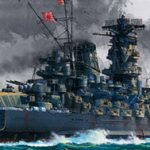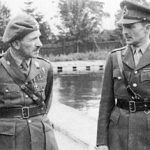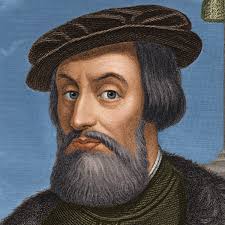At dawn on 3 August 1492, three ships bobbed gently in the waters off the port of Palos de la Frontera, Huelva, on the southwest coast of Spain. These ships, the Santa María, the Pinta and the Niña, marked the beginning of one of the most daring and momentous expeditions in human history: Christopher Columbus’ first voyage to America. This event would not only change the worldviews of the time, but also open a new chapter in the exploration and exchange between continents. The age of great discoveries was beginning.
Columbus, a stubborn seafarer
Christopher Columbus, a Genoese navigator convinced that the Earth was round, had devised a daring plan to reach Asia by sailing west from Europe. After years of attempts to obtain financial support, he finally obtained the backing of the Catholic Monarchs of Spain, Isabella of Castile and Ferdinand of Aragon. So, on 3 August 1492, he set sail with a brave crew and a vision that would change the course of history.
The hardness of the trip
The crossing was not easy. The weeks in the Atlantic Ocean were long and discouraging. The crew, imbued with a sense of uncertainty and fear of the unknown, began to lose hope. Columbus, however, proved to be a tenacious and visionary leader. His ability to maintain the morale of the crew and his confidence in the enterprise were essential to overcoming the challenges.
Land in sight
And so, on 12 October 1492, after more than two months at sea, unknown lands were sighted. Columbus and his crew found themselves in front of an island in the Caribbean, which they would later christen San Salvador. This moment marked the initial encounter between the Old World and the New World, an event that would change global history and transform the way cultures related to each other.
The first encounter between Columbus and the inhabitants of these lands, the Tainos, was a fascinating but complex cultural exchange. Although both groups were initially curious about each other, linguistic and cultural differences created significant barriers. Columbus, with the persistent notion that he had arrived in Asia, called the natives “Indians”, a term that would erroneously prevail in the decades and centuries that followed.
The first settlement
The Spanish explorer continued his voyage, exploring several Caribbean islands, including Cuba and Hispaniola. The Santa Maria, however, ran aground off the coast of Hispaniola on 25 December 1492. Columbus left part of the crew at a settlement called La Navidad and returned to Spain on the Niña, carrying with him the news of his discovery. This incident, although a setback, did not diminish the impact of his achievement.
Return to Spain
Columbus’ return to Spain in March 1493 was greeted with enthusiasm. News of his success spread quickly throughout Europe, and Columbus was received as a hero. However, doubts persisted about the exact nature of his discoveries. Many believed he had reached a part of Asia, and it was not until later explorations that the magnitude of his discovery was realised.
Columbus’ first voyage to America marked the beginning of a period of intense exploration and colonisation. Other explorers, such as Amerigo Vespucci and Juan Ponce de Leon, followed in his footsteps, expanding European knowledge of the New World. As colonies were established and cultural exchanges took place, human history became more complex and connected than ever before.
Consequences of Christopher Columbus’ first voyage to America
However, the legacy of this first voyage is also marked by negative consequences. The arrival of Europeans in the Americas triggered a process of conquest and colonisation that had devastating impacts on the indigenous populations. The spread of disease, the exploitation of resources and the imposition of new social structures irreversibly changed the landscape of the Americas.
Christopher Columbus’ first voyage to the Americas was a momentous milestone that opened a new chapter in world history. His bold vision and determination led to a historic encounter between two previously separate worlds. While the impact of this voyage was immense, the complexity of its consequences and the price paid by the indigenous populations cannot be overlooked. This event continues to be the subject of reflection and debate today, reminding us of the importance of exploring history with a critical and sympathetic perspective.














Leave A Comment